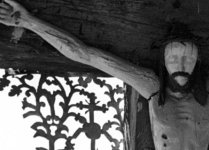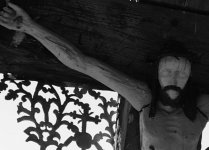jschrader
Well-known
To go back to b&w, I have revived my Nikon FE and tried an Ilford XP2. I have compared the negative scanned with a CoolScan III to the same picture taken with the same lens on a D700 (11 MP). The scan is supposed to be with 2700 dpi, that should be around 8.5 MP.
Film/Scan is left, the DSLR is right.
I do not know exectly how large the crop is, roughly 1/6 of the whole picture edge length.
I think if You click them, You see enough to decide that the scan contains less details.
WHY? because of the 8.5 vs. 11 MP? Or, is the 2700 dpi of the CoolScanIII only nominal and it is, in reality, only 2300 dpi?
Is there any use in buying a newer scanner with nominal 7200 dpi that has 3500 in reality?
Who can help me?
Thanks everybody
Film/Scan is left, the DSLR is right.
I do not know exectly how large the crop is, roughly 1/6 of the whole picture edge length.
I think if You click them, You see enough to decide that the scan contains less details.
WHY? because of the 8.5 vs. 11 MP? Or, is the 2700 dpi of the CoolScanIII only nominal and it is, in reality, only 2300 dpi?
Is there any use in buying a newer scanner with nominal 7200 dpi that has 3500 in reality?
Who can help me?
Thanks everybody



